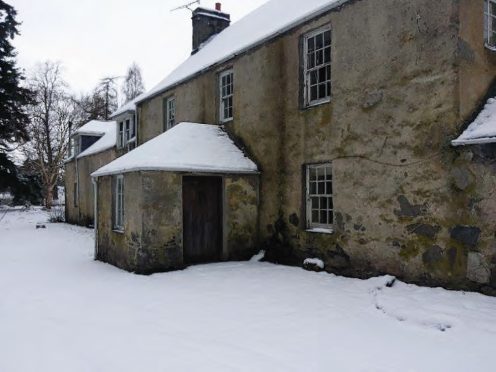Derelict farm buildings on a Highland sporting estate that was made famous by the Monarch of the Glen television show are to be transformed into a new tourist attraction.
Balavil Estate, near Kingussie, is planning to convert outbuildings, which have been falling into disrepair since the early 1970s, into “visitor facilities”.
If approved, new buildings would also be built alongside the farmstead to house a cafe and space for events.
Balavil has been described as the “jewel in the crown” of Scottish sporting estates, comprising 7,500 acres running from the River Spey into the Monadhliath mountains.
Its mansion house was made famous as Kilwillie Castle in the television drama Monarch of the Glen.
It was bought for an undisclosed sum last year by Hannah Heerema – the daughter of singer Fiona Kennedy and businessman Francis Clark – and her husband Eric.
The current proposals are one of the first signs of planned investment in the estate by the new owners.
The farm buildings – Mains of Balavil – are B-listed and were built round about 1800.
They stopped being used for agricultural purposes some time before 1971 and have since fallen into disrepair.
In a statement published with the application, planning agent Philip Flockhart of Morris and Steedman Associates described the plans to bring the buildings back into use.
He said: “This application aims to regenerate the range with new uses and to restore the original character of the currently dilapidated buildings.
“The centrepiece of the group, the farmhouse, is to be restored to more closely resemble the original appearance.
“The front porch, rear extension, inappropriate windows, dormers and openings will be removed.”
The mill building, currently in ruinous condition, will be extended from the remnants of the former building – while other parts of the steading will also be renovated and in places extended.
Mr Flockhart added: “Overall the intention is to create a new grouping of buildings around the rear courtyard that harmonises with the steading whilst providing a new sheltered visitor space.”
Car parking will be provided, while the central cobbled courtyard will be redesigned to comply with modern access standards.
Before last year’s sale Balavil had never been on the market before, having been in the Macpherson family since 1790.
After the purchase, the new owners said they wanted to “preserve its legacy” and make the estate an “incredible family home”.
